Could environmental pollutants play a role? Why is autism sometimes thought of as simply extreme male behaviours? And since genetics are involved, could you diagnose newly born babies and start treating? We get to grips with this often misunderstood condition.
In this episode
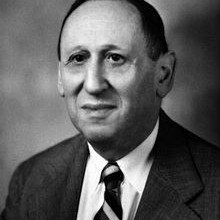
00:59 - Autism Awareness
Autism Awareness
with Quick Fire Science, Hannah Critchlow and Kate Lamble, Naked Scientists
Getting us to grips with this often misunderstood condition here's the Naked 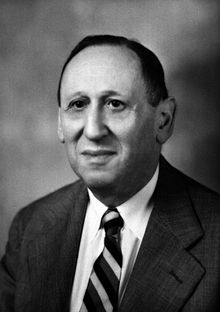 Scientists Quick fire Science, I'm joined by Kate Lamble.
Scientists Quick fire Science, I'm joined by Kate Lamble.
- Autism, was first described as a unique syndrome in 1943 by the American psychiatrist and physician Leo Kanner
- Today, Autism spectrum disorder, or ASD is recognised to affect around one in every 100 people worldwide
- Each case is different, but everyone on the spectrum shares three main areas of difficulty; social interaction, communication, and imagination or flexible thinking.
- On the flip side people with ASD may exhibit common strengths with a focused attention to detail, an excellent memory, and a tendency to logical thinking.
- Other common traits of ASD include a love of routines, sensory sensitivity in one of the five senses, and having intense special interests, topics that they enjoy talking about and engaging in over and over again.
- However it's hard to characterise a condition which ranges from the one in ten people who cannot speak to those who are high functioning and have a milder form of Autism Spectrum Disorder.
- ASD Symptoms typically start to develop in early childhood, but some people with milder forms are not diagnosed with the condition until adulthood.
- In the past, some people believed that the vaccine for measles, mumps and rubella caused ASD. However further investigation showed that there is no link between the two, instead the age at which communication problems begin to appear in ASD patients is around the same age that the vaccine is given.
- While we don't yet know the cause of autism, it's been suggested that high levels of testosterone in the womb may affect brain development and lead to the condition. This may be why males are more likely to have autism than females, at a ratio of about 4:1
- Genetics also seems to play a role in 90% of autism cases, with an increased risk of a baby developing the disorder if relatives have it. But it's likely that many genes are involved, possibly interacting with environmental factors.
- There is no 'cure' for ASD, but education and behavioural support can help. If you are concerned that your child may exhibit characteristics of the disorder, visit your GP who can refer you for an assessment
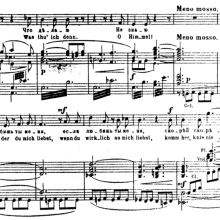
03:34 - How does autism affect you?
How does autism affect you?
with Robyn Steward, National Autistic Society Ambassador
To find out how this very heterogenous condition affects one person, I spoke with 27 year  old Robyn Steward.
old Robyn Steward.
Robyn - My autism affects me in a wide range of ways. When I was younger, I had a lot of difficulties reading body language and reading people's intentions, and understanding other people's perspectives of particular situations. That skill is called theory of mind and I had to work very hard to develop a kind of cognitive theory of mindset. I'm able to think through situations by myself rather than it being intuitive. I actually have to work quite hard at that. I have some sensory perception differences to other people. So, my hearing is hypersensitive when I'm under stress. So for example, when I'm really anxious, I get pains, pulsing pains in my ears. I have a lot of problems with knowing which emotions I was experiencing and then how to deal with them before they built up. So, most people are able to regulate their emotions over a day and do things to level up the balance between their anxiety and frustration for example whereas that's something that somebody with an autistic spectrum might find quite difficult and actually have to be very conscious to deal with that.
Also, when I was at school, I got bullied a lot because I was different and a lot of people in the autistic spectrum I suppose, they don't think about work politics. And so, they'll often say exactly what they mean and there are sometimes when they may well behave in a way that other people might not understand. So, like stimming for example which is short for self stimulating. Diagnostically, you call that repetitive routine behaviour. So, things like flapping, looking and that kind of thing, people on the autistic spectrum will sometimes do that for a wide range of reasons, but could be anxiety, could be stress, could be dealing with overstimulation. I have to have a period of time during my day where I stim generally just before bed for 15 or 20 minutes just to keep me calm and a bit more regulated.
Hannah - Is there any other kind of roles or any other ways that you manage your autism?
Robyn - Yes, lots really. So, I have Stanley who is a stress star. He's not a ball because he's in a star shape and I use him more particularly when I'm going up and down an airplane. The thing about autism is that it affects people. Autism really is just a cluster of human behaviour taken to the extremes. So, the way that somebody on autistic spectrum experiences the world is just an extreme version of what somebody without autism might experience.
So, the things that I find difficult and the tools that I use probably, they are similar to a non-autistic person. But I'm perhaps more likely to use them on a more regular basis, but also in a more conscious way perhaps. So, coming up and down on an airplane, that might sound like a very, very routine thing. For me, I'm not really worried about plane crashes because they're so rare. They do happen, but they're quite rare. It's more of the pain because I'm hypersensitive. My brain will process the change in air pressure and I could get overwhelmed by the pain. Obviously, when you get off the plane, then you have to dealing with all the lighting and the sounds, and navigating around somewhere that you may well not have been before. Using Stanley would be kind of a preventative measure to make sure I don't get too overwhelmed.
I use headphones a lot. I have an iPhone and I listen to music a lot. I find like Led Zeppelin for example, "When the Levee Breaks", something like that. It's really good for going through tube stations. I ask people maybe a lot more than other people would because I don't expect myself to necessarily know why somebody may or may not do something, so I don't ask. I also am very conscious about the fabrics that I wear, that there are some fabrics and some textures that I can't cope with.
Hannah - Thank you very much, Robyn and also, do you think that your autism affects - I mean, it sounds like you've got lots of different ways of managing it in its preventative way, but do you think it still affects your relationships with friends, family or maybe a boyfriend or...?
Robyn - Yeah. I mean, autism obviously affects social communication, social imagination, social interaction. So obviously, it's going to have an impact on the relationships that you have with your friends and family.
So, there are some people on the autistic spectrum for example who only have one friend and that that's all they can cope with. There are other people who don't have any friends and that's their choice or people on the spectrum who are asexual equally. There are people on the spectrum who have lots and lots of friends.
I found that I was very lonely up until about the age of 21 or 22 when I moved to London. I started off going to social groups for other people on the autistic spectrum. I suppose that my friends, predominantly, they have some sort of autism connection, whether they've had a sibling who is on the autistic spectrum or whether they work in autism.
Hannah - Thank you, Robyn. You mentioned that you work in the musical area. So, you're a musician I believe?
Robyn - Yeah, that's right.
Hannah - People traditionally think of people with autism spectrum disorders as being scientists like myself for example. You're obviously creatively very good. How does that work? Do you see that there is some stigma attached to autism now and some preconceptions with the public?
Robyn - Well actually, I'm terrible at maths. So, the complete opposite to you, I'd make a terrible scientist I think. I think there's a lot of misunderstandings around autism because Simon Baron-Cohen worked on this theory around systemising - how people on the autistic spectrum like systems. Music is something that does involve lots of systems. If you think about how scales are made up, that's a system. That relies on a lot of maths. What music offer to some people on the autistic spectrum like me, it's a simpler way of communicating because human beings can be very complicated and quite hard to communicate with. But when you communicate with people through music, which takes a lot of the difficulties away.
Hannah - Thank you, Robyn Steward, speaking about her experiences with autism. Robyn is also a National Autistic Society Ambassador where she helps others with the condition.
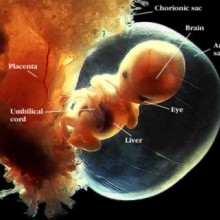
10:23 - The brain biology of autism
The brain biology of autism
with Professor Simon Baron Cohen, Cambridge University
Debunking the myth that environmental pollutants play a role, asking how testosterone shapes the brain in the womb, and looking into the future, could genetics help screen and diagnose babies? Next we speak with the scientist who came up with the autism systemising hypothesis. Professor Simon Baron-Cohen is Director of the Autism Research Centre at Cambridge University...
Simon - Autism is a neurodevelopmental condition. So, it means that it affects the way the brain develops. The brain isn't developing in the typical fashion. The symptoms that you observe are that the child is not showing the normal interest in people, but instead they become preoccupied by objects. So, they have trouble in the peer group in developing social relationships and in communication.
But the other side of autism is that they become very obsessed with objects or the physical world. So, they just have interests in the usual way, but they're going to have things much more deeply. They also have trouble with coping with change and like things to be very predictable. Autism is a lifelong condition and that it's the way the child is born. Probably because by prenatal factors, you don't expect the person to kind of grow out of their autism. It's there for life.
Hannah - How many people does autism actually affect worldwide?
Simon - The estimates are that it's about 1% of the population. For example, in any primary school, usually about 200 kids, there'd one or two kids with the diagnosis of autism. So, I see that as quite common and those numbers are much higher than they used to be. If you went back 20 or 30 years ago, the textbooks told us that it was 4 children in every 10,000. It's become recognised much more and the fact that we're also recognising that much broader spectrum probably means we're picking up more cases.
Hannah - So, it's that rather than the fact that there's an increase in the number of people that are actually getting the disorder maybe due an environmental factor for example. So, there has been hypothesis that increased environmental toxins might lead to an increase in the risk of autism?
Simon - Yeah, I mean, I think it's sort of safer to assume that the increase which is definitely there reflects more about that we're better at picking it up. And also, that we've broaden the criteria that what counts as autism that maybe a generation ago, a child was just a bit different and maybe obsessed with maths or chess might not have got a diagnosis. We might have just thought that was an eccentric child, the child is a bit different, or maybe even a bit delicate. That's the kind of the words that people used to use. And now, we might give it a psychiatric label.
But the idea that there's something in the environment, a toxin, I don't think there's any good evidence for that. The danger of course is that if you start trying to link the increase with some environmental toxin, you can raise a lot of public anxiety. That's exactly what happened with the MMR debate - the idea that the MMR vaccine, measles, mumps and rubella that's given to children at about 18 months old might cause autism. Once that idea was floated, it caused a lot of public anxiety about the vaccine programme - public health programme. But it turned out that there's was no good evidence for it.
Hannah - It was simply more the case that the age at which symptoms might emerge in children was shortly after the vaccine had been administered. And so, that's why that link was made in the first place, but it turned out to be nothing more than the coincident and timing?
Simon - Around 18 months is the age when you'd start to notice. That's probably the earliest age you'd start to notice that the child wasn't interacting with their peer group or maybe was delayed in language. So it could be a coincident in timing. But the original research linking them was actually because they found the measles virus more commonly in the gut of children with autism. But later, research didn't support it.
Hannah - So, there are some other symptoms that you've mentioned like for example being fixated on a particular task, getting concerned about change and the structure of your day to day life for example. Sometimes people with autism may have difficulty reading people's expressions and feeling empathy for other people. These are in some way things that I relate to. So, I didn't like change that much and I can't get fixated on certain tasks. And also, some of the tasks that scientists used to help investigate autism where you try and read a facial expression of an actor, I find it incredibly difficult to tell whether someone is frightened or amazed for example. So, does that mean that I have a small amount of autism? Is it a disorder?
Simon - Right. Well, on the question of the words 'disorder', I don't intend to use that term in relation to autism. So, I preferred the terminology autism spectrum conditions because I think 'condition' reflects that it is biomedical event and that this person might need a diagnosis to get support. So, it's kind of not trivialising the fact these symptoms might be interfering with the person's life, such that they need to go to a clinic and get help. But calling it a disorder, I think it's a bit harsh to tell somebody, "Your brain is disordered." I don't think there's any clear evidence for a disorder. It's just that these are children who are developing differently. There's a kind of recent concept that's come in called neurodiversity - the idea that in any community, in any population, the brain is going to be developing in different ways in different people. That there isn't a single route for normal development. Of course, we've always known that because if you think about left-handedness and right-handedness, that gives you one example of diversity and how the brain gets wired up. But of course, the brain is much more complex than just about whether the right or the left is dominant. And you can imagine some children who are more verbal, more or less verbal, some who are more obsessive or less obsessive. So in that sense, there are many different cognitive or neuro profiles in the population. Autism may just be one of those profiles. But if it's interfering with the way that the person can function, they might need a diagnosis. But it is kind of opening up this whole new way of thinking about autism which is that it's a spectrum of traits that runs right through the population and we all have some autistic traits.
Hannah - I suppose that maybe at one end of the spectrum, it offers an evolutionary advantage to have some of these traits, these personality traits.
Simon - Yeah. I mean, the idea of linking autism with evolution is interesting because autism is partly genetic. So, although we don't yet know which of their genes that are necessary and sufficient to cause autism, we know that it runs in families. Potentially, a large number of genes are involved. So, if you find a trait or a condition that's partly genetic then you immediately start thinking, why is it still in the gene pool? Has it been adaptive or positively selected in evolution? As you say, some of the aspects of autism, they're not necessarily disabilities. They can even be talents. So, children with autism are very good at spotting details and they love patterns.
Hannah - So, they'd be incredibly good on 'Where's Wally?' for example, spotting where Wally is within this myriad picture, this very busy picture of lots of different people.
Simon - Yeah, so the task of Where's Wally is really about attention to detail. In the modern environment that particular children's game may not be adaptive. It may just be fun. But you could imagine millions of years ago, individuals who were good at spotting details might have had some advantage including reproductive advantage in terms of spotting predators or finding resources and food, and kind of learning what's safe and what's harmful in the environment.
Hannah - Going back to the genetics of autism, it seems as though males are more likely to have autism than females. Is that something to do with the Y-chromosomes or the chromosomes that only men express? I've got 2 X-chromosomes and you got an X and a Y. Is that something to do with that incident difference between genders?
Simon - The genes for autism, I mentioned, it's not a single gene condition. There are many genes involved. Some of them may be on the X-chromosome and the fact that females have two X-chromosomes, males only have one, may mean that the genes for autism vary according to the number of X-chromosomes you have. The other thing is that autism can occur in a female. We've been looking at the role of this so-called male hormone testosterone and actually both sexes produce the hormone. It's just that males produce more of it. We've been looking at the role of that hormone in shaping brain development in typical children and whether higher levels of prenatal testosterone are linked to more autistic traits. We've been finding mothers who had amniocentesis during pregnancy where you can take some of the fluid that surrounds the baby and analyse it - in this case, the testosterone - and then wait for the baby to be born. We've been finding that the children who had higher levels of prenatal testosterone show more autistic traits during postnatal development.
Hannah - How does this fit in with the view that autism is kind of an extreme male condition? So for example, I've been listening to the radio recently. I've heard some women getting in touch saying, "My husband has definitely got autism. He's just so unempathetic. He's behaving in a particular way. He's spending all his time in the tools shed organising his tools and being very fastidious about the work that he does on the house. He must be autistic."
Simon - So, the idea that autism might just be an extreme of the typical male brain, that comes from the notion that there are sex differences in the general population in cognition. Quite a lot of research shows that there are average differences between males and females. It's not that all males show one pattern and all females show another, but males, even from childhood are more likely to be interested in objects, in machines, constructional tools like Lego. Females are more interested as a group on average, show more interest in people. And so, the idea that autism may just be an extreme of the typical male profile, well, it sort of fits that. that people with autism show even less interest in people. But the idea that if you show that profile and you a diagnosis, that doesn't necessarily follow. There are lots of people who enjoy quite solitary activities down in the garden shed, but that's all part of the normal variation in the population. It doesn't mean they need a diagnosis unless it's causing difficulties at work leading to perhaps losing their job because they're not managing to work with colleagues, causing depression because it's social isolation. So, we have to kind of distinguish between normal variation which may be linked to sex differences and the point at which it starts to interfere with your ability to cope.
Hannah - Which then moves on to the diagnosis of autism for this big spectrum where lots of characteristics occur on this continuum of how people behave and what their personalities are made up of? How do you diagnose autism and are there any biological markers that you can use in order to help with that?
Simon - So, a diagnosis of autism at the moment rests on behaviour. I think a lot of clinicians would like it if there was a biological marker to improve diagnosis because otherwise, diagnosis can be a bit subjective. That's the kind of hope, but we're not there yet. We're quite a few years away. I sort of suspect that even if we knew all the genes involved or all the hormones involved, or any other biological marker, we might still need the clinical interview. So, you'd sort of need to show not only that they've got - as it were- the blueprint for autism, but it's having an impact in their everyday life.
Hannah - Finally, there's been decades of research, trying to understand autism and yet, we seem so far away from having a full grasp on it. Why do you think that is?
Simon - So, autism was first described in 1943. We've had 70 years of research. but actually, quite a few decades actually, up until about the year 2000. There was very little science going on. If you look at the rates of publishing of journal articles in science on the topic of autism, the line is pretty much flat from 1943 up to 2000 and then it takes off. That reflects that a lot more funding is going into autism research. probably, also the results of effective lobbying by parent groups and charities saying, "While we're spending all this funding on other conditions like cancer, why aren't we spending the proportionate amount of money on understanding autism?" So in some ways, it's kind of early days. Also, the early research was after we focused on the psychology of autism, we're not so much on the neuroscience or the biology. So, that's really just opened up since the technology has been available - brain scanning, the new genetics and also, old theories about the causes of autism, and the idea that it was caused by bad parenting kind of got in the way of making scientific progress.
Hannah - Thanks to Simon Baron-Cohen from Cambridge University.

24:06 - Helping children with autism
Helping children with autism
with Tom Hughes, Trainee Educational Psychologist, Birmingham University
Given there is no biological treatment available, how best to help those children affected 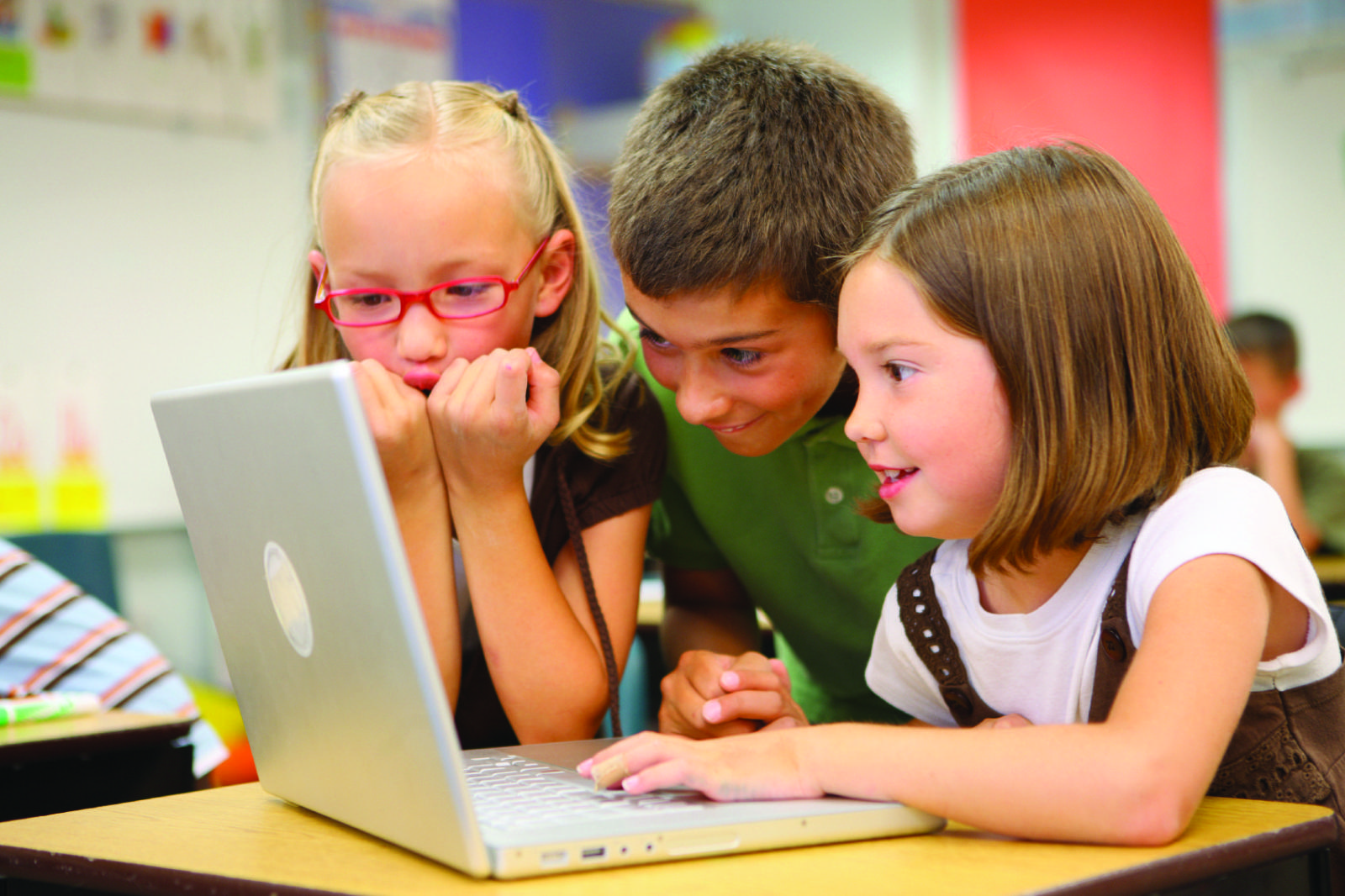 by autism, both at school and in the home?
by autism, both at school and in the home?
I met with Tom Hughes, Doctorial Trainee Education Psychologist at Birmingham University. He's also working with the Educational Psychology Service to help children with autism, both in the home and school setting.
Tom - Sometimes we will find in class for example that a member of staff makes a throwaway comment, sets off a child with autism because the comment can be interpreted in a number of ways. Sometimes by raising awareness of how a child with autism may have interpreted a statement like, "It's raining cats and dogs" provides additional insight. So often, we will work with children with autism to develop skills that come quite naturally to lots of other children. So turn-taking or sharing, or looking at another person on entry in the room. For example, skills that typically developing children will generally pick up with little instructions. So, an example of where a peer may support that is by creating sharing or turn-taking games where a number of typically developing peers are working alongside children with autism. Various studies indicate that peer-based learning is as effective, if not, more effective than adult-led learning when it comes to those social skills that are being developed.
Hannah - Are there any issues for the peers in the class, maybe their time is being taken up than by helping? Is there any danger that you're actually holding back the peers in the group in the mainstream education system?
Tom - That's certainly a consideration for any of these interventions. Parents are often worried about time taken out of learning for example to support special educational needs or inclusion more generally. My experience is that children that are providing the support also benefit from these interventions and what they gained from developing or promoting pro-social behaviours and learning to be more empathetic about the needs of others generally as long as the time is within reason outweighs the challenge of taking away from whatever they would be doing in class.
Hannah - And then as the child develops and they go through primary school, into secondary school for example, and then out, past the educational system, what do you typically see with these students?
Tom - There's no doubt that children with autism struggle at their points of transition in their education or career. So, the transition from primary to secondary school is often a source of real concern. Clearly, the secondary settings are bigger and there are more peers which is often an area that the autistic child might struggle with and there are more teachers. They will move between class. The regular transitions are all areas that typically children with autism will struggle with. Our advice in terms of structuring a learning environment to support children with autism focuses often in 4 areas. The first one is around supporting the receptive languages needs. So, supporting their understanding in class and making sure that they've got appropriate ways of communicating their needs. The second one is to use visual cues so we would often talk about visual timetables or symbols, or objects, or pictures as being an appropriate way to develop understanding of a topic. Fairly, we often do work to ensure that unstructured times of the day are more tightly managed for children with autism. So, transitions between lessons or breaks or lunch time or assembly for example are often difficult times of the day. And children with autism may need more support in those periods. And then finally, where you often work with teachers and parents to help children predict what's about to happen. So, children with autism typically may struggle with unknown elements of the day or unpredictable parts of their life and predicting and then helping communicate what's to be expected ahead is an area that really makes a difference for children with autism.
Hannah - And then past school, past secondary education, what kind of support can you give people with autism spectrum conditions then?
Tom - Autism is of course, a lifelong disability that will continue to manifest into adulthood. Many of the children and young people that we work with will progress through education and lead successful and independent adult lives. Of course, those children and young people that we work with that have a greater level of need may continue to need some assisted living arrangements as they move on from education. The difficulty of course is generalising any of our expectations because children and young people with autism present differently and making generic statements about what we can expect post-education is impossible. Certainly, I work hard with schools and parents and families to identify the individual differences within the manifestation of autism, and to consider the autism as an extension of the individual rather than as a definition of the individual.
Hannah - Thank you, Tom. Well, that's all we have time for this month I'm afraid. If you have any questions about autism and you can find information and support with the National Autistic Society at www.autism.org.uk
- Previous World's Largest Dinosaur
- Next Natural born cleaners










Comments
Add a comment